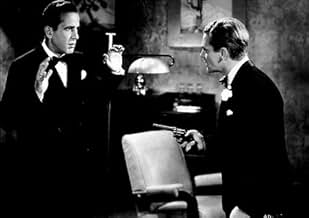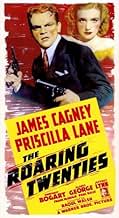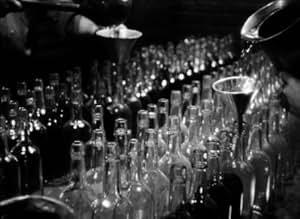Not as well remembered as "Little Caesar" or "Public Enemy," "The Roaring Twenties" is the culmination of a decade's worth of Warner Brothers gangster films. It was also James Cagney's last tough guy role at the studio for almost a decade.
Cagney is criticized by some in this one for not packing the cinematic punch he did in "Public Enemy" or "White Heat." But this film was the brain child of former Broadway columnist Mark Hellinger and was written as almost an ode to the Damon Runion-like characters Hellinger knew when he prowled the great white way during the 20s. Hellinger was a regular at the famous El Fey club and friend of Texas Guinan, the wild saloon hostess who personified the twenties. Cagney's good/bad guy character, Eddie Bartlett, was in fact based on Larry Fay, the cab driver turned bootlegger who opened the El Fey and hired Guinan as his hostess. Fay is also believed to have been one of the inspirations for F. Scott Fitzgerald's "The Great Gatsby." Bartlett is meant to symbolize,not a psychotic criminal, but more the social confusion that resultedfrom the passage of a highly unpopular law meant to regulate character,which wound up having the absolute opposite effect, spawning an era of lawlessness.
Although Cagney dominates every scene he is in, the more ominous gangster in the film is played by Humphrey Bogart in one of his best performances prior to assuming character roles in the late 40s. His trigger happy hood was probably fashioned after Owen "Ownie the Killer" Madden, the bootlegger who bought into Harlem's Cotton Club and formed a loose alliance with Fay.
Strong supporting work comes from Gladys George, who plays Panama Smith, the Texas Guinan character.
This picture is slick, well produced, uniformly well acted under the direction of action specialist Raoul Walsh and features some great Cagney stick. When he exploded on screen, there was no one like him.



























